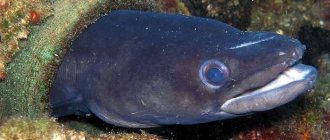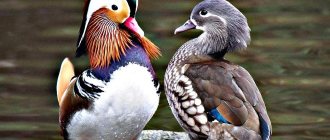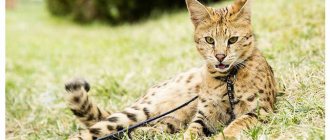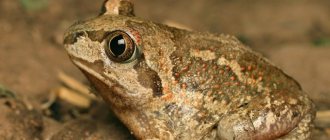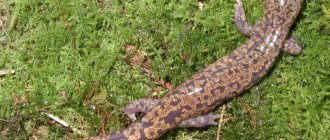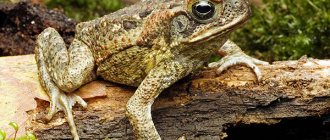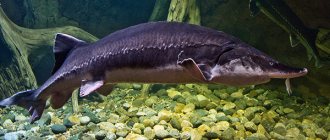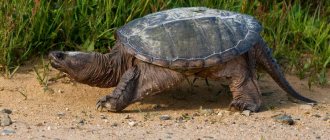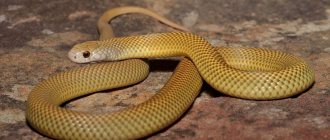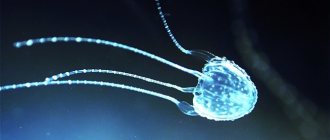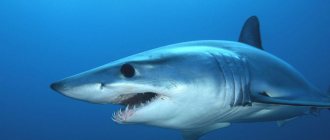The most numerous order of mammals are rodents. A total of 2,277 species have been described. They can be found almost everywhere, anywhere on our planet, with the exception of Antarctica and some islands.
Typically, all rodents are small in size, from 5 to 130 cm, but on average do not exceed 50 cm. Many of them have a particularly long tail, which is significantly larger than their body size, but some have it completely absent, such as sea pigs.
The smallest rodent is only 3 cm in length (plus 2 cm for the tail), it weighs only 7 g. Some rodents are impressive in their size. Thus, the average weight of a capybara is 65 kg, and individual specimens weigh up to 91 kg.
The largest are rodents, which have long since become extinct. The remains of giant representatives of this group were found, the largest of which weighed from 1 to 1.5 tons, it is possible that it reached a size of 2.5 tons. Nowadays it is impossible to meet such giants.
But still, the largest rodents in the world amaze with their size, despite the fact that in our society there has long been a stereotype that if it is a rodent, then it is a tiny animal that fits in the palm of your hand.
Indian giant squirrel
It is also called Indian ratufa . This is a tree squirrel that can be found in India. Prefers mixed or deciduous forests. These animals usually live in groups.
In each individual habitat they have their own fur color, so you can easily determine where this or that animal was caught. Usually the color scheme consists of 2-3 colors, from beige to brown in different shades, and yellow is also found. Indian giant squirrels have a white patch between their ears
The length of the squirrel, if you count the head and body, is 36 cm (adult), but they also have a long tail, which grows up to 61 cm. An adult squirrel weighs about 2 kg. They prefer to live in the upper layer of the forest. These are very cautious animals, they are active in the early morning and late afternoon.
What are the builders of the largest beaver dam doing now?
It appears that the beavers have stopped building their super-home for a while and are expanding two other dams, whose size is not so large. Both dams are located “on the flanks” of the main object, and if the beavers work on them with the same diligence as now, then after a few years the dams will merge, turning into a structure more than a kilometer long.
Dam created by beavers
It must be admitted that no other animal changes the surrounding landscape like the beaver. Only people have achieved more noticeable results in this direction. That is why American aborigines have always treated beavers with special respect and called them “little people.”
Dam Builder - Beaver
Soviet chinchilla
Despite the name, we are not talking about a chinchilla at all, but about a breed of rabbits that are bred for their fur. It was bred in the USSR. Our specialists crossed American chinchillas with different breeds and were able to increase the live weight of the animal to 5 kg.
In 1963, a new breed, the Soviet chinchilla, . Its representatives are distinguished by thick fur, high-quality skin, large size, good endurance and early ripening.
Their body is 60-70 cm long, they are silver or dark silver, the belly and part of the paws are black, and there is a border of the same color on the ears. An adult rabbit weighs from 3 to 5 kg, among them there are record holders who gained up to 7-8 kg.
Beaver nutritional features
Beavers are herbivorous rodents. Their diet includes bark and shoots of trees (aspen, willow, poplar, birch), various herbaceous plants (water lily, egg capsule, iris, cattail, reed). They can also feed on hazel, linden, elm, and bird cherry. They readily eat acorns. Large teeth and a strong bite help beavers to eat fairly solid plant foods, and the microflora of their intestinal tract digests cellulose foods well.
The daily required amount of food reaches 20% of a beaver's weight.
In the summer, the diet of beavers is dominated by grassy food; in the fall, rodents actively prepare woody food for the winter. Each family stores 60-70 m3 of wood. Beavers leave their reserves in the water, where they retain their food quality until the end of winter.
Nutria
Its other names are swamp beaver or koipu . " Nutria " is translated from Greek as "mouse-beaver". In appearance it resembles a rat of enormous size: the body grows up to 60 cm, the tail is 45 cm, it weighs from 5 to 12 kg. Males are usually larger than females.
She has a huge head with small ears and eyes, and a blunt muzzle. The tail is hairless, it is a kind of rudder that is used when swimming. The fur of this animal is waterproof and brown.
Nutria lives in South America, but it has been able to acclimatize in many countries. It is active at night. Lives in groups of 2-13 individuals.
Types of beavers
There are 2 types of beavers:
- Canadian C. canadensis
. It lives in North America and has successfully taken root in Patagonia and Europe. - European or Eurasian beaver C. fiber
. Lives in Eurasia.
There are significant genetic differences between species. The Canadian has 40 chromosomes, the European has as many as 48. Due to differences in DNA, the species do not interbreed. In Russia, scientists made more than 20 attempts to cross the 2 species, but all efforts ended in failure; they failed to obtain a living hybrid.
Despite the fact that outwardly the animals are very similar to each other, differences in appearance are still present. The North American species has a shorter and wider muzzle and a longer, denser and darker undercoat. The tail of Canadian beavers is wider and more oval in shape. North Americans are also smaller in size and have rounder, proportionately smaller heads. Europeans have a triangular nose, while North American beavers have a square nose.
Baybak
Another name is common marmot . It lives in the virgin steppes of Eurasia. The English name “Bobak marmot” comes from the Turkic word “ baibak ”, which also means “marmot”.
It is similar to other marmots, but stands out for its yellow coloring and short tail, which does not exceed 15 cm in length. The bobak also stands out for its size: its body length is from 50 to 70 cm, a fattened male can weigh up to 10 kg.
Once upon a time it was a common animal that lived in the steppe zone from Hungary to the Irtysh. But due to the plowing of virgin lands, the amount of area it occupied was significantly reduced, because they cannot live in vegetable and grain crops. Baibaks form perennial colonies and make many burrows for themselves. They feed on plant foods.
Dams and beaver buildings
Animals build dams from trees to create a dam and live in quiet water, and huts for protection from the cold and predators. If there are no trees nearby, the animals dig holes along the shore of the reservoir. Animals will knock down a tree with a diameter of less than 15 cm in less than an hour. It will take about 4 hours to cut down a tree with a diameter of 25 cm or more. Animals bite the trunk at an angle of 45 degrees, and alternately chew with the right and left sides. Then the beaver cuts off the branches and drags the trunk with its teeth. The animals drag the dirt and stones needed for construction in their front paws, pressing them to their chest.
To build the dam, tree trunks with a diameter of about 5 cm and a length of about 2 meters are used. The trunks are located in the direction of the water flow at an angle of approximately 30 degrees, and rest on the banks of the reservoir. The trees are pressed down with stones, the holes between them are plugged with grass. Dams vary in height from 20 cm to 3 meters and can extend up to several hundred meters in length. Beaver-built dams are often more durable than human-built structures. Animals living in ponds and lakes do not need to build dams.
Some animals dig channels connecting reservoirs to each other. What are the channels for?
- increase the availability of resources;
- simplify the transportation of resources;
- for protection from predators.
The channels are on average about 1 meter wide, about 0.5 meters deep, and can stretch more than 0.5 km in length. When animals drag tree trunks behind them, they create a well-worn path, along which it becomes easier to transport new trunks over time.
Pacarana
Another name for it is false pack . The pacarana looks like a guinea pig, but is a fairly large rodent. Her body length is from 73 to 79 cm, she weighs 10-15 kg.
This is a massive, heavy animal. The tail is about a third of the body in size. She has a wide head, on which there are round ears and unusually large eyes.
Pacarana is black or dark brown, has white spots, and has coarse and sparse fur. You can meet her in the forests of the Amazon. These are slow animals. Not much is known about their life.
Interesting facts about the rodent:
- The common beaver is the largest rodent in Europe and the second largest in the world after the capybara.
- The word "beaver" comes from an Indo-European language and is an incomplete duplication of the name for the color brown.
- Until the middle of the 20th century, beaver fur was very popular in America, Europe and Russia, which is why the population of these animals decreased noticeably: there were 6-8 isolated populations of 1200 individuals left. To preserve the species, beaver hunting was prohibited. Currently, the common beaver has a minimal risk status, and the main threats to it are land reclamation activities, water pollution and hydroelectric power plants.
- In addition to beautiful and durable fur, beavers are a source of beaver stream, which is used in perfumery and medicine. Beaver meat is also edible, but may contain salmonellosis pathogens. According to church canons, it is considered fasting.
- In 2006, a beaver sculpture was unveiled in the city of Bobruisk (Belarus). There are also sculptures of this rodent in the Alpine Zoo (Innsbruck, Austria).
Source: o-prirode.ru
Mara
They are also called Patagonian hares or Patagonian pigs . Mara can grow up to 69-75 cm, large individuals gain weight up to 9-16 kg. Their tail is only 4.5 cm long.
The upper part of their body is grayish, the lower part is whitish, and there are white or yellow stripes on the sides. This rodent has thick fur.
You can meet mara in South America. They prefer to go out in search of food during the day, gather for communal feeding, and feed on plants.
Flanders
This is the name of one of the rabbit breeds. She was bred in Belgium. Flanders is one of the most famous and widespread breeds; exactly how it was obtained is not known exactly.
These rabbits are bred in many countries, and in each of them Flanders have their own characteristics. There are German, English, Spanish, etc. representatives of this breed. They did not take root in the USSR due to the harsh climate, but were used to breed the “gray giant” breed.
Flanders amazes with its size. They have a long body - up to 67 cm, high, thick and dense fur, color - gray or yellow-gray. Adult rabbits weigh 7 kg, some of them grow up to 10-12 kg, there are record holders weighing 25 kg.
Population and protection of the species
Both species of beaver - Canadian and Eurasian - are included in the international Red Book as species of least concern.
The number of beavers in North America is estimated at 6-12 million individuals. This is much smaller than the original population, which experts estimate ranged from 60 to 400 million animals before Europeans colonized the continent. Thanks to restrictions on commercial hunting imposed at the end of the 19th and beginning of the 20th centuries, by the end of the 20th century the number of animals had significantly recovered from the damage caused by uncontrolled hunting of animals in the 18th-19th centuries.
Historically, the animal’s habitat extended throughout Europe and Asia, but by the beginning of the 20th century, due to active fishing, only fragmented, isolated populations remained. Currently, the number of animals in Europe has increased significantly. Since 2009, the animals have been reintroduced to the UK. In 2022, the beaver population in Europe was estimated at 1 million individuals.
There are about 340,000 individuals in Russia. In Mongolia and northern China, the animals are still very rare - there are no more than 1,000 individuals in both countries. The animals have taken root quite successfully in Patagonia: in 2016, the beaver population in Patagonia was estimated at 35-50,000 animals. Beavers are not native to New Zealand and are considered an invasive species and are prohibited from being imported into the country.
Crested porcupine
It is often called the porcupine . The thick and stocky body of the animal is covered with dark and white needles. He has 2 types. There are long and flexible ones, growing up to 40 cm, and there are short and hard ones, 15-30 cm each, but differing in significant thickness.
The crested porcupine has a rounded muzzle with round eyes. He has short legs, he moves slowly, but he can also run. He uses his voice very rarely, only in moments of danger or irritation.
This is a very large rodent, growing up to 90 cm, plus a tail of 10-15 cm. Average weight is 8-12 kg, but some well-fed males weigh up to 27 kg.
Beaver
A semi-aquatic mammal with beautiful fur, consisting of coarse hair and very thick silky underfur. It is light chestnut or dark brown in color, the tail and paws are black.
The beaver is one of the largest rodents, its body length is from 1 to 1.3 m, and its weight is from 30 to 32 kg. It was once common throughout Europe and Asia, but by the beginning of the twentieth century it was almost exterminated, but now it can be found almost everywhere. Beavers settle near rivers, lakes, and ponds, living in their huts located under water or in burrows in steep and steep banks.
Description of the rodent
The beaver's body weight is about 30 kg, the body length reaches 1-1.5 m, females are usually slightly larger in size than males. The rodent has a blunt muzzle, small ears, short, strong legs with powerful claws. The beaver's fur consists of two layers: on top there are hard red-brown guard hairs, and underneath there is a thick gray undercoat that protects the beaver from hypothermia. The tail is bare, black, flattened and wide, covered with scales. Near the base of the tail are two glands that produce an odorous substance known as “beaver squirt.”
Capybara
It is also called capybara. This is a herbivorous mammal, its name consists of 8 letters ( capybara ), and is often asked in crosswords and scanwords. Its body length is 1-1.35 m, height - 50-60 cm. Males can weigh from 34 to 63 kg, females - even more, from 36 to 65.5 kg. Externally, the capybara is somewhat similar to a guinea pig; it has an elongated body and hard fur.
It can be seen in Central and South America. Lives near water, rarely goes more than 1 thousand meters from it. They are active during the day, but can also become nocturnal.
They can swim and dive, feed on aquatic plants, grass and hay, and tubers. Capybaras are calm, friendly, and are often kept as pets.
4 1
Beaver breeding
Beavers are monogamous rodents. Breeding occurs once a year. The mating season begins in mid-January and lasts until the end of February. Pregnancy lasts 105-107 days. One litter contains 1-6 cubs, which are born in April-May. Babies are born semi-sighted, well-furred, and their weight is approximately 0.45 kg. After a few days they can already swim. The female teaches them to swim, pushing them out of the hut into the underwater corridor. At 3-4 weeks, the beaver cubs begin to eat leaves and stems of grass, and until 3 months the mother feeds them with milk. The young live with their parents until they are two years old, after which they reach puberty and begin an independent life.
In captivity, the lifespan of beavers is up to 35 years, in the wild it is 10-17 years.

